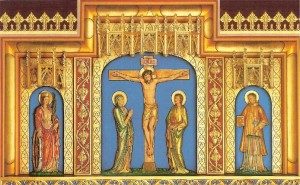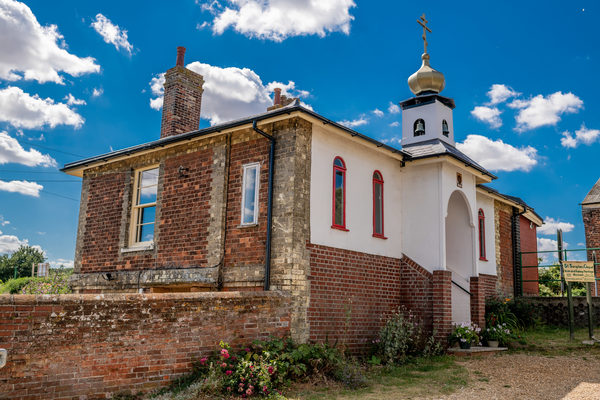The present building appears to have been construct in the thirteenth century; given new windows in the fourteenth and fifteenth century; and finally a south porch In the fifteenth or early sixteenth century, but was largely rebuilt in the nineteenth century, as it was “in a ruinous and most unsafe state, unfit for the purpose of Divine Worship”. In that rebuilding, the dressed stonework and the furnishings of the church were carefully preserved and reused, an example of nineteenth century recycling.
The very fine screen and pews date from the fifteenth century, the altar rails from the early seventeenth century and one of the bells, named John, is dated 1516. The architect responsible for the rebuilding, W.Eden Nesfield, wrote “the whole of the walls to be rebuilt with rubble of the same thickness as the present ones and on the old foundations and in exactly similar character to the old walls. The old facing stones, quoins, windows, jambs and heads internally and externally and rubble work are to be reused so far as they are resounding approved by the architect, great care being taken to replace each stone so reused in exactly the same position that it previously occupied”.
In 1877 this was quite a new approach to church restoration, and as a result the feel of the church is not Victorian, even despite the rebuilding of the walls and the introduction of red tiles for the roof and floor, and the frosted glass for most of the windows.
The tower has three bells, one mediaeval inscribed 'In Multis Anniston Resonet Campagna Johannis’. Another has no inscription and the third was cast by John Draper of Thetford in 1611.
The great treasure of the church building is the rood screen. It is the classical single Norfolk type, with a double row of cussing and sub-cussing in each head. The theme of the painted panel on the left is “Holy Women and Their Children”. They depict from left to right St. Emerita (aunt of the Blessed Virgin) with her child Servatius. St. Mary Salome with her sons St. James and St. John. The Blessed Virgin and Child. St. Mary Cleophas with her sons St. Jose, St. Jude and St. James the Less and Simon Zelotes. St. Elizabeth and her son St. John the Baptist. St. Anne with her daughter the Blessed Virgin Mary. The theme of the panels to the right is “Teachers of the Church”. First come the four Latin Doctors, St. Gregory, St. Jerome, St. Ambrose and St. Augustine. Followed by two popes, St. Silvester, and St. Clement. The former has a leper at his feet.
The Stained Glass in the east window and the small Good Shepherd window in the south wall, were both installed at the time of the rebuilding. The west window is by Gibbs and Howard. The altar and reredos, made by Mr. Guntons of Costessey, were added in July 1888 and decorated in the 1930’s.
In the present century, the population of Houghton St.Giles has declined very considerably resulting in the church actually being closed for worship between 1967-1977. Happily, it has been reopened.








